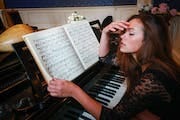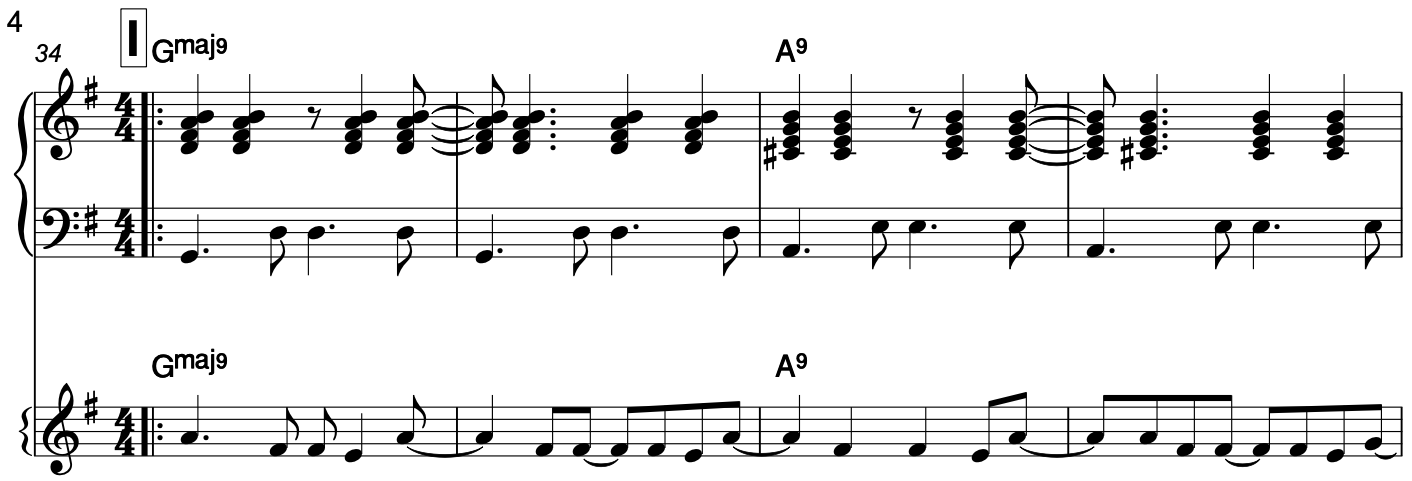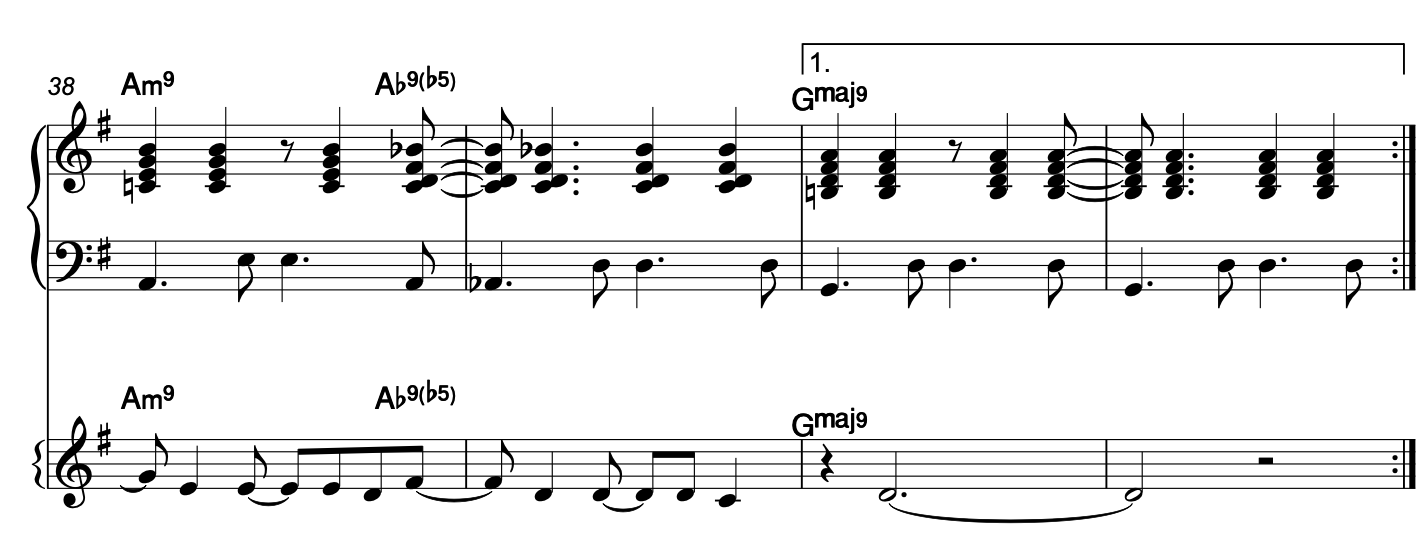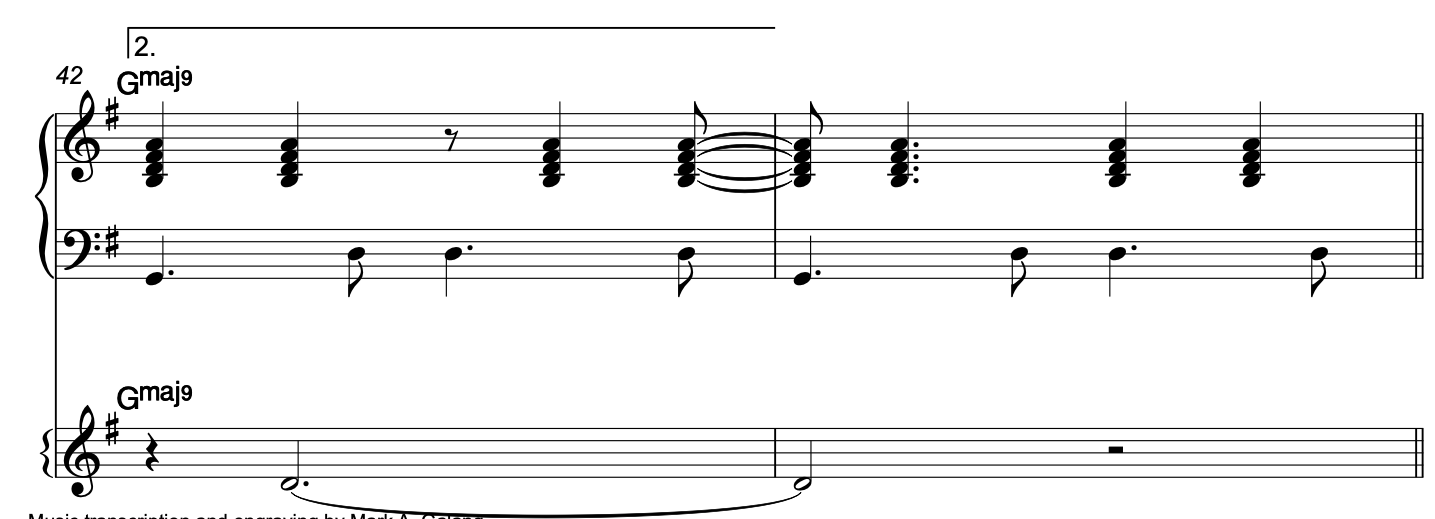How To Play Bossa Nova Music & Chords On Piano
 Want to learn how to play Bossa Nova music on piano?
Want to learn how to play Bossa Nova music on piano?
Look no further. We have a great lesson for you.
Let’s get started.
Why Learn Clave For Bossa Nova Music?
 At the heart of Bossa Nova, much like any Latin American music style, is the clave.
At the heart of Bossa Nova, much like any Latin American music style, is the clave.
The clave is a timekeeping rhythm that provides the heartbeat of the music.
This is the kind of rhythm that makes Bossa Nova music sway.
The Bossa Nova clave is not a very definite, hard-coded rhythm. While every tune will have a steady clave rhythm as its backbone, there is not one Bossa Nova clave so to speak.
This is not like Son or Rhumba clave which has to be a very specific rhythm for any tune designated as either Son or Rhumba.
Bossa Nova music’s clave and rhythms are derived from Samba but in a more relaxed or slower tempo.
Let’s start with a simple left hand rhythm that looks like this:

In a band or ensemble setting, the rhythm above will be played by a bassist and a percussionist on a kick drum or something like a surdo.
As for the actual Bossa Nova clave you’re going to learn, it looks like this:

Start learning the rhythm by tapping with your right hand it along a metronome click.
Once you’ve learned both left and right hand rhythms, set your metronome to a slow tempo and try playing both left and right hand rhythms together.
Practice these rhythms until you become comfortable.
When you have these rhythms under control, it’s time to go to the piano.
How To Apply Bossa Nova Rhythms At The Piano
 First, start with a root and 5th pattern using our left hand rhythm:
First, start with a root and 5th pattern using our left hand rhythm:

Next, play a 6/9 chord with the right hand using the Bossa Nova clave rhythm from earlier:

It should look It sound like this if you play it hands together:

In situations where you don’t have a bass player, you need to play Bossa Nova music on the piano like this to get it to sound full.
If you happen to have a bass player, you can simply use hands together chords playing the Bossa Nova clave like this:

Practice both versions written above so you can have both a hands together comping style you can use with a band and a piano only version.
Let’s talk about chords in Bossa Nova Music.
How To Play Chords For This Style Of Music
 Bossa Nova music is heavily influenced by jazz.
Bossa Nova music is heavily influenced by jazz.
Therefore, the simple answer to that is learn some neat jazz chord voicings.
For solo piano playing, chords with roots can work. Here are some voicings:

Some of the best chords to use for Bossa Nova Music are rootless chords. Start practicing these chords voicings both with the right and left hands separately:

Learn how to play both rooted and rootless voicings. Once you’ve mastered these chord voicings, learn them in all 12 keys.
Last step is to apply the rhythm and add a bass line like this:

Additionally, you can learn great jazz chord voicings over at www.freejazzlessons.com where we have tons of lessons on jazz harmony and more.
Let’s look at how we can apply them through the Tom Jobim classic, The Girl From Ipanema
How To Practice Bossa Nova At The Piano
 Let’s take a look at a lead sheet of the A section from The Girl From Ipanema:
Let’s take a look at a lead sheet of the A section from The Girl From Ipanema:

Begin by learning the melody. You can either sing the melody or learn it with your right hand. To learn it both ways of course is better.
Next, figure out the chords from the chart. Learn the chord voicings as well as the bass line below:



At this point, simply become familiar with the chord voicings. Once you become familiar with them, practice playing them using a bossa nova rhythm.
Practice the chart above if you intend to comp with left hand bass while someone sings or plays the melody.
If you want to play the melody with your right hand, learn the right hand chord voicings as rootless left hand chords.
To even play a more advanced version, you can start playing the melody as octaves, as Red Garland block chords (root + 5th + octave), or harmonize each melody note with a matching chord.
Final Words
I hope you all enjoyed this lesson on how to play bossa nova music on the piano.
If you have questions, comments, or suggestions for a new lesson, feel free to leave some below.
Happy practicing!
Questions? Reach out to our support team at Piano Lessons Online. We’re here for you and love answering any questions you might have!
